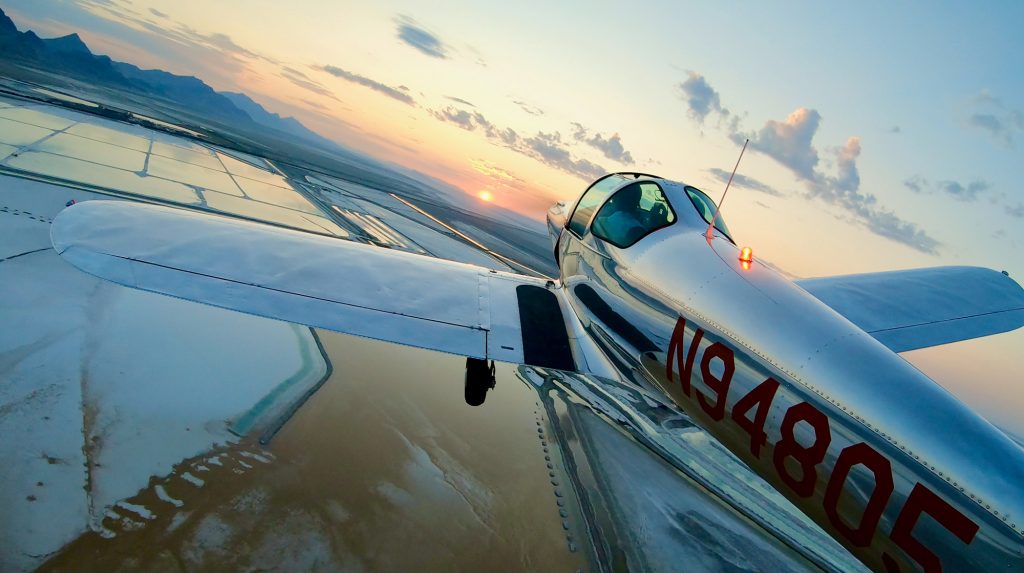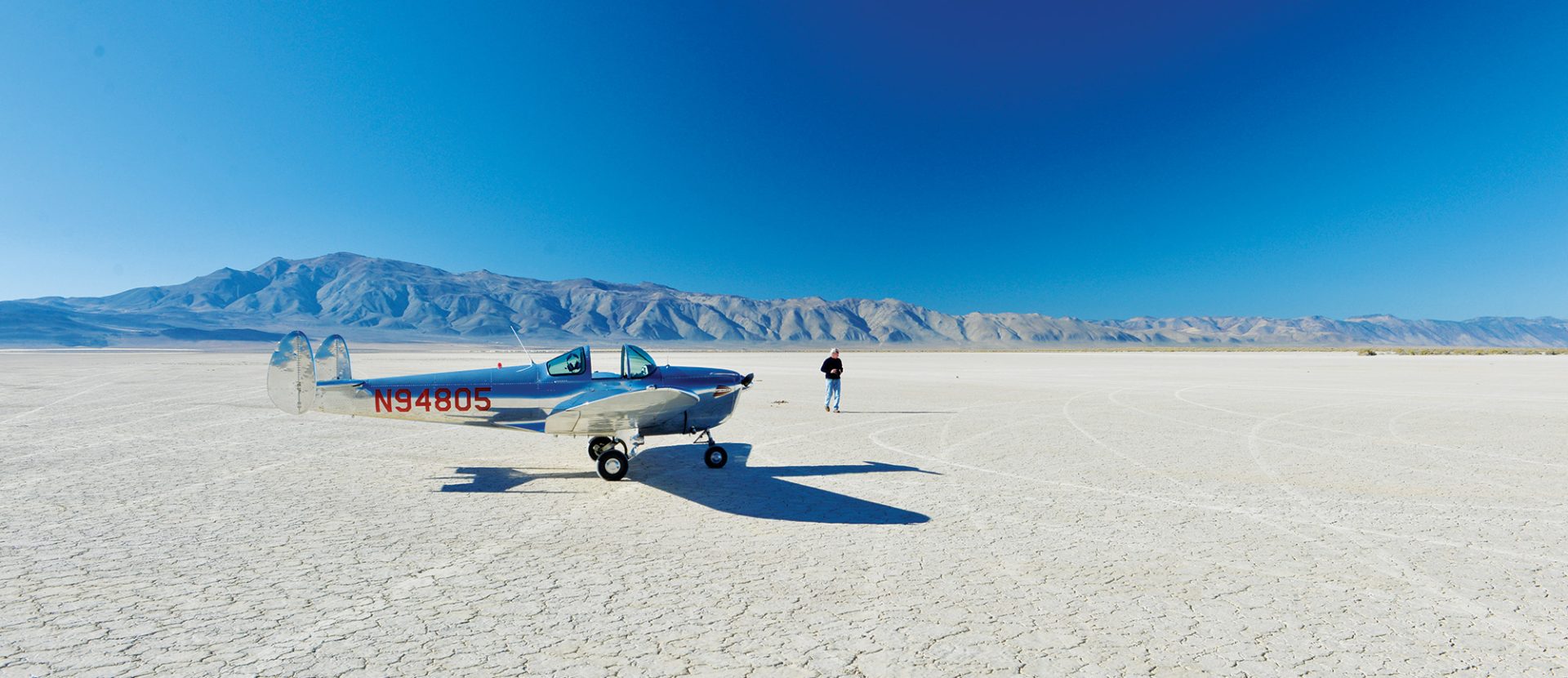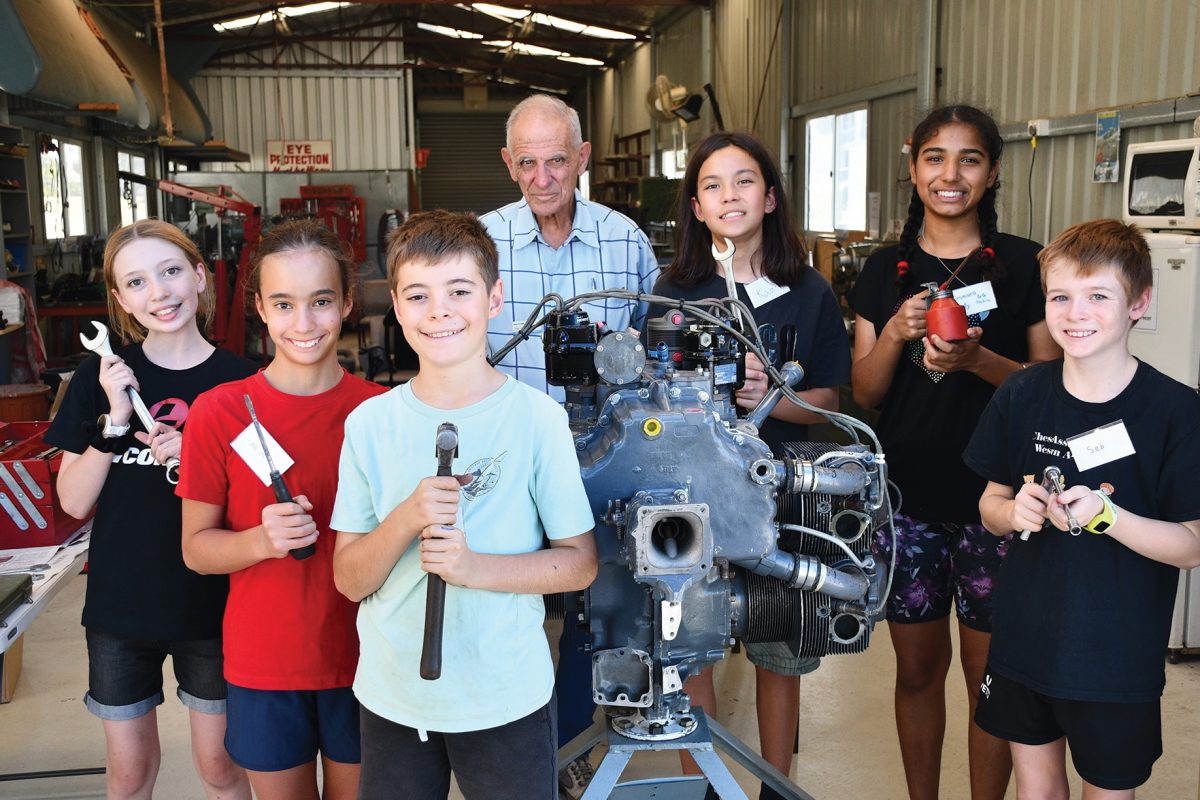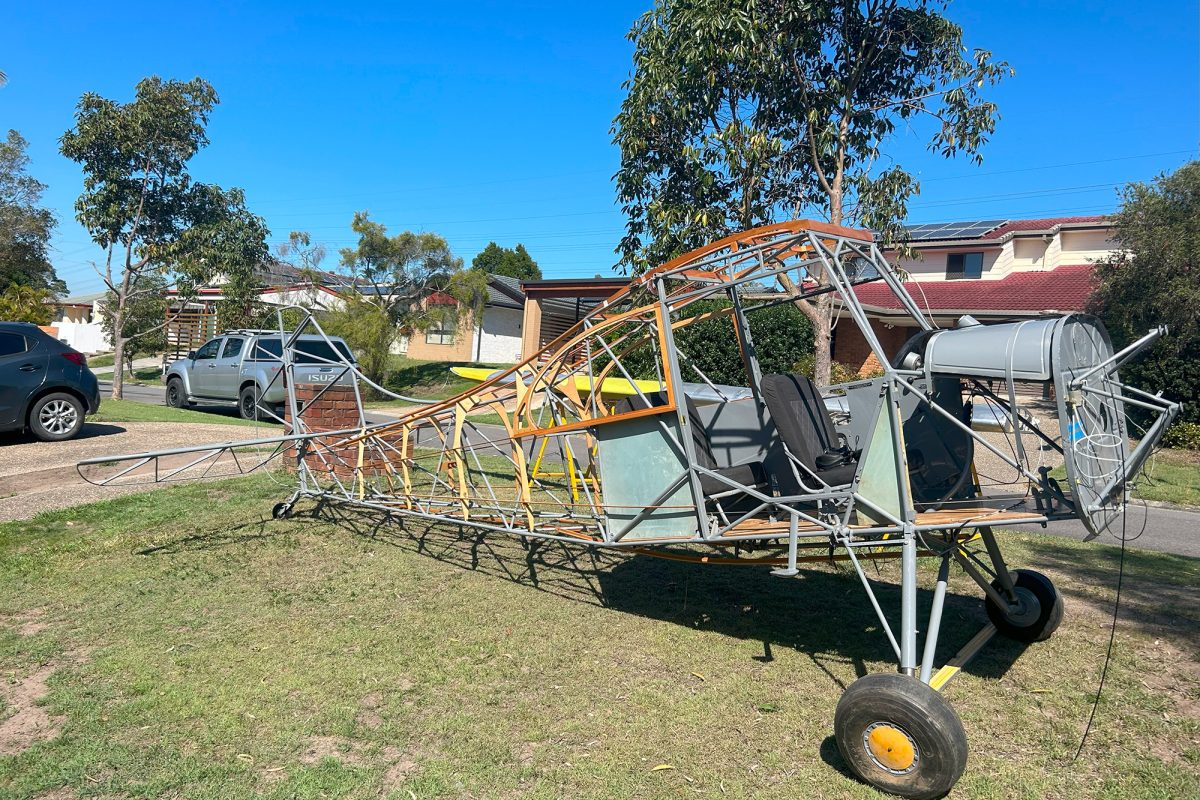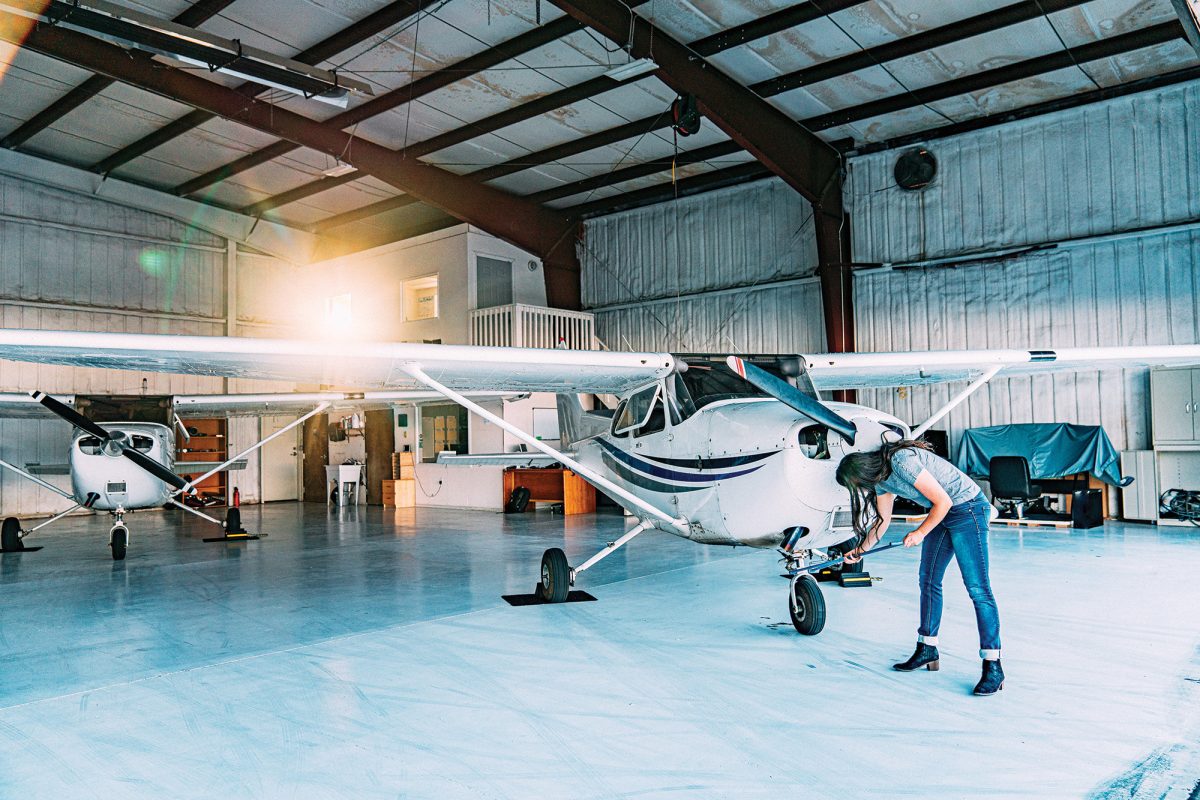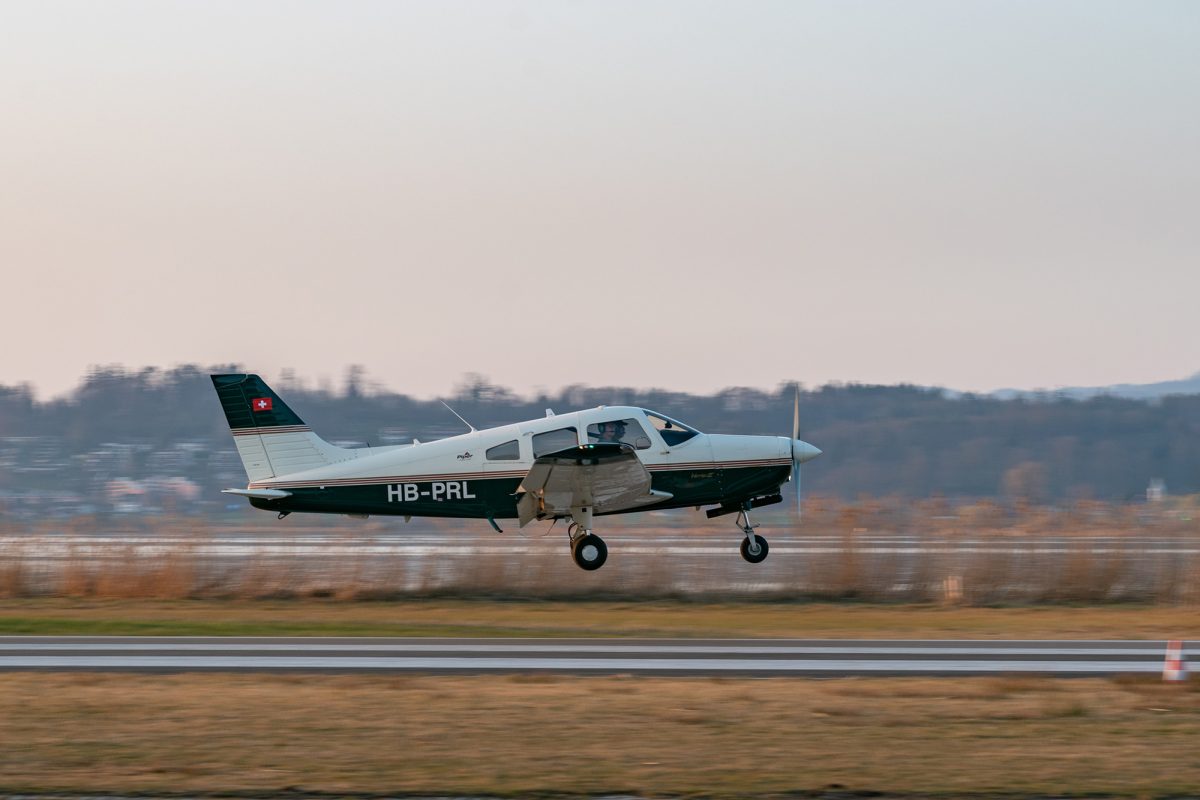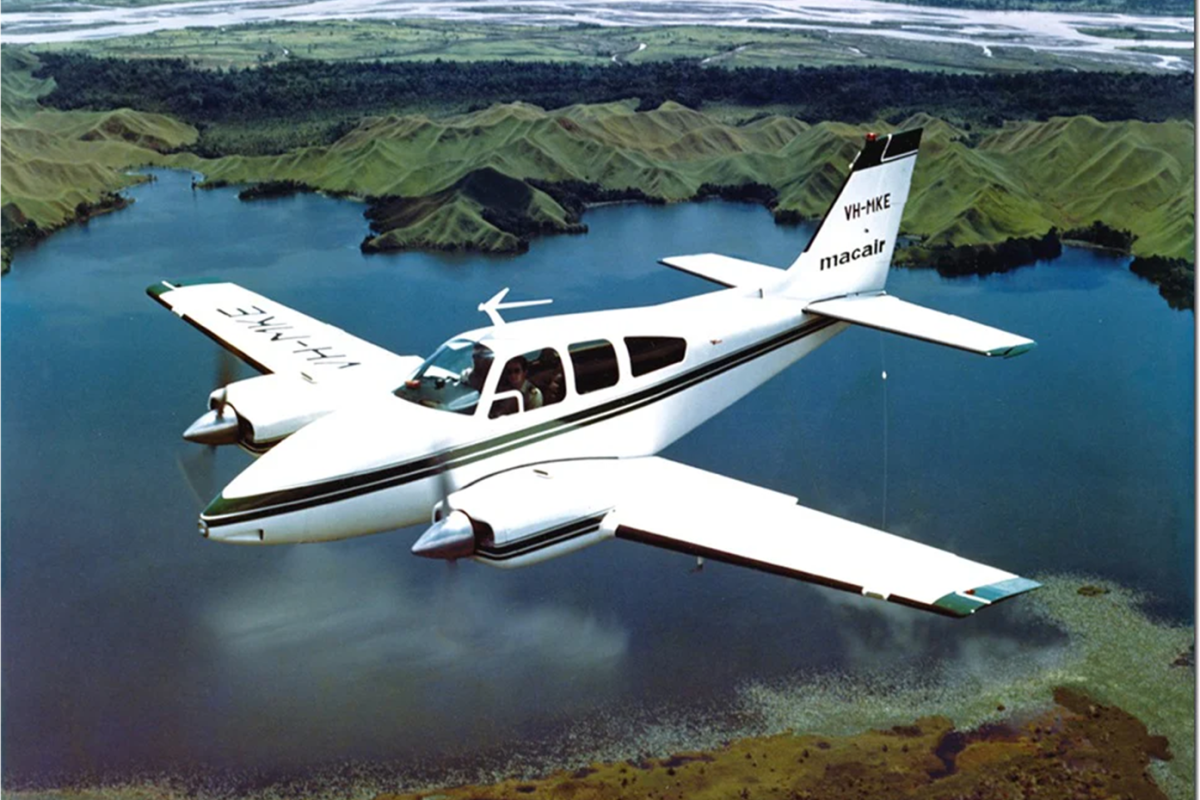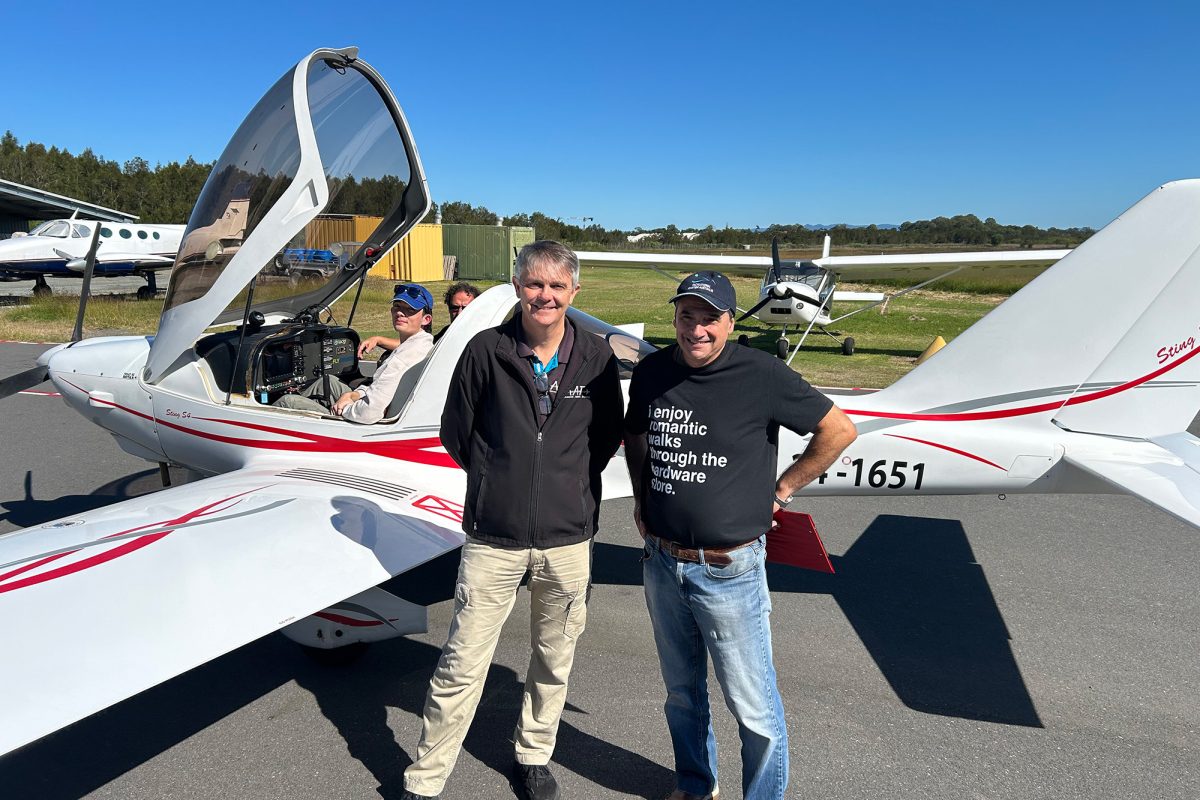THE UNASSUMING 1930’S GEM WITH PLENTY TO LOVE
When you heard about the approval of RAAus’ new Group G category, your mind probably raced through a quick list of aircraft you’d now be able to fly. If you’re like me, the Cessna 152, Vans RV range and a spate of different bush planes sprang to mind. But what about this stunningly beautiful little design that made its maiden flight before WWII?
Born out of a desire for an affordable, easy-to-fly aircraft that would appeal to the growing American middle-class of the time, the ERCO Ercoupe is something of an icon. First flown in 1937, this low-wing aluminium monoplane was one of the first true forays into developing an aircraft designed specifically for the civilian market. The Ercoupe first entered production in 1940 and enjoyed considerable success, with more than 5,600 models produced over its 29-year production run.
The key to this success lies in the Ercoupe’s simplicity. The Ercoupe features a unique control system, eliminating the need for rudder pedals. A two-control system links the rudder and ailerons, requiring only the control wheel to coordinate pitch, roll and yaw. It may sound far-fetched and confusing to established pilots, but the Ercoupe’s controls were deemed exceptionally safe, and of course, easy to learn. In fact, the Civil Aeronautics Administration (CAA) – precursor to the modern FAA in the US – certified the Ercoupe “characteristically incapable of spinning”, the first aircraft to receive such certification.
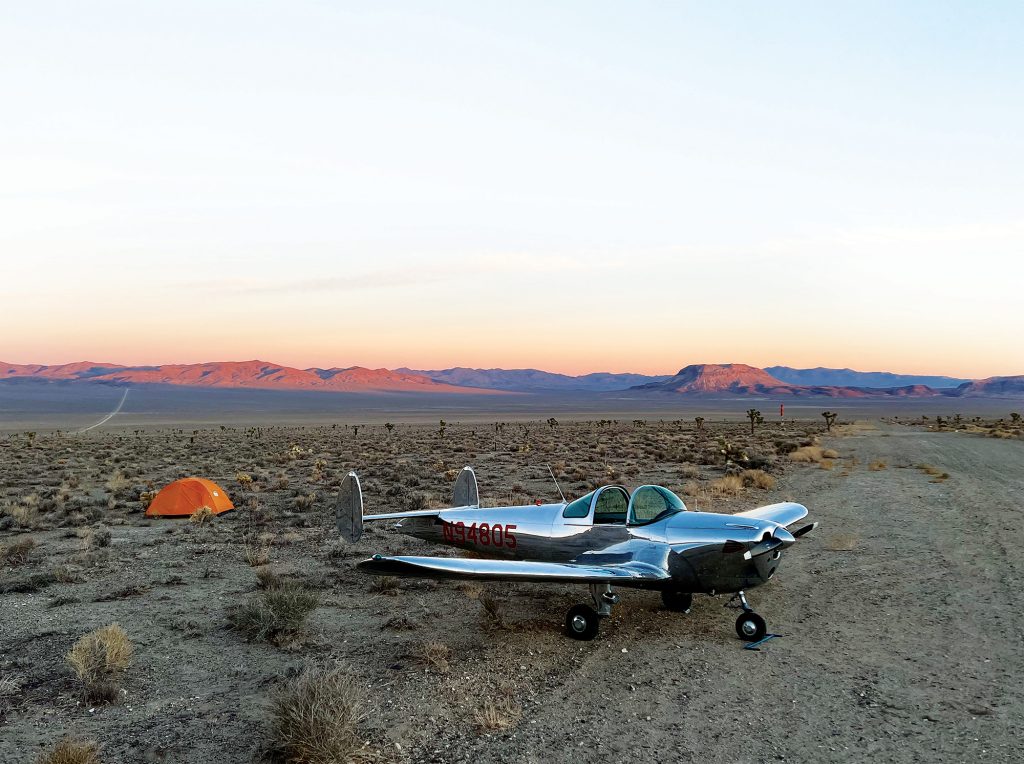
Of course, ERCO also found themselves in a favourable position post-WWII. With all their research and development completed before the breakout of the war, ERCO now found themselves with an inmarket, civilian-focused aircraft that they could marketaggressively to the thousands of men and women trained to fly during wartime. At its peak, the ERCO factory was producing 34 Ercoupes per day, but the civil aviation revolution that ERCO had hoped for never fully materialised. Eventually, the company sold its designs to a number of manufacturers, who kept the model in production until 1969.
As a result, there are a number of different models of Ercoupe flying in various places around the world today. Each model is its own beast, but they all share the same basic design principles; simplicity and reliability. It’s because of this that the Ercoupe continues to maintain a loyal following of pilots, including Peter Ritchie, who flies an Ercoupe out of Tyabb (YTYA) in Victoria.
“It’s a really simple aircraft,” Peter told me, when I asked about how it flies. “Because the rudders and ailerons are interconnected, it’s always got a balanced turn.” Also adding to its reputation as an easy-to-fly aircraft, the Ercoupe maintains a negative angle of attack when on the ground. This means you must be applying backstick to get it to lift off the ground, but it also that it’s incredibly hard to bounce coming in to land. “Once you learn how to fly it, it’s a really nice plane. I can really see the appeal for RAAus.” Peter says.
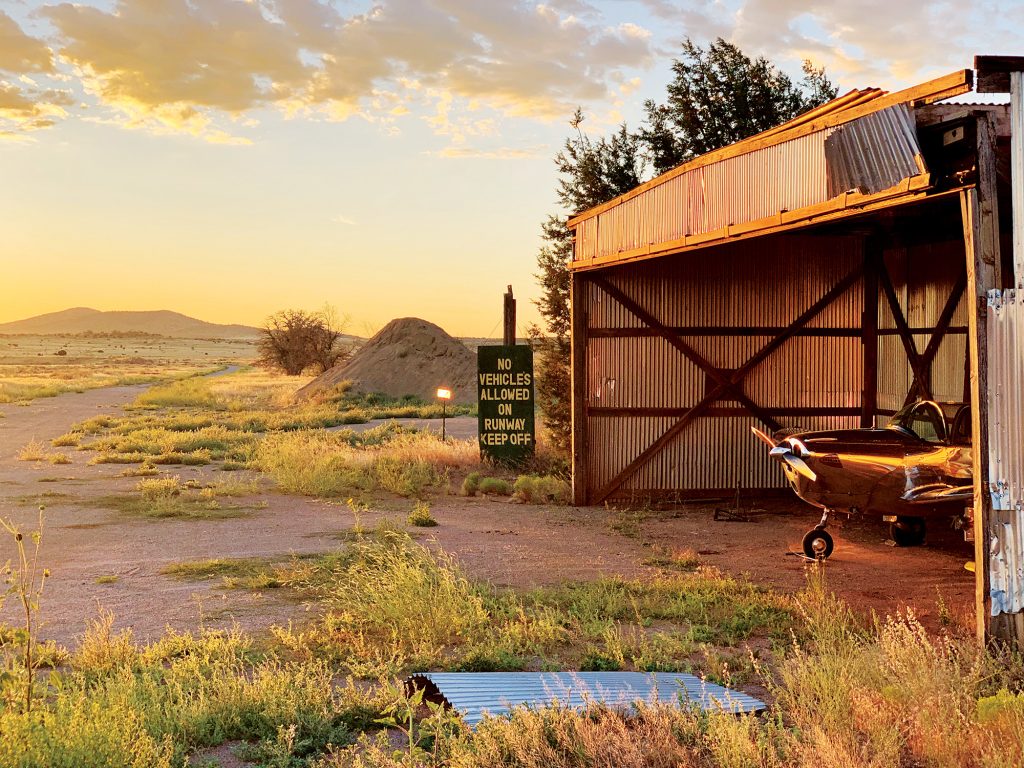
As previously mentioned, there have been several different models of Ercoupe produced. Nevertheless, their performance characteristics have remained fairly similar. Looking at the Ercoupe 415-C (the model produced during the 1945-46 boom), the aircraft’s strengths become clear. Powered by the 75hp Continental O-190, the Ercoupe is able to achieve a 96kn (180km/h) maximum speed, cruising at around 83kn (153km/h). Coupled with a 260nm (480km) range, the Ercoupe makes for an extremely fun plane to fly. Granted, these performance stats aren’t where you’d expect a modern aircraft like the Blackshape Prime to be, but it isn’t a modern aircraft. “I’ve flown the Blackshape, which burns at 20L/h like the Ercoupe.” Peter tells me, “Yes, you’re cruising at 125, 130 knots, but you can only fit two lightweight people in it. The Ercoupe will take two adults, full fuel and enough left over to carry lunch.” For an aircraft design that’s pushing 90, it holds up remarkably well.
Of course, for that lack in performance, you gain a whole lot of cool. The Ercoupe is an undeniably beautiful plane, with lines and styling influenced by the art-deco era it was conceived in. The triangular fuselage shape, big front-grille air intakes and dual egg-shaped vertical stabilisers are all reminiscent of that golden age of aviation.
Inside the cockpit is like stepping back in time. You’re unlikely to find any digital avionics in one of these machines, and the uniquely-shaped control wheel is truly something to behold. The sliding glass canopy offers exceptional visibility however, almost on par with modern bubble canopies. Did I mention you can fly it with the roof open? Peter ensures me it’s fantastic on a hot sunny day, and I’m hard pressed to believe otherwise.
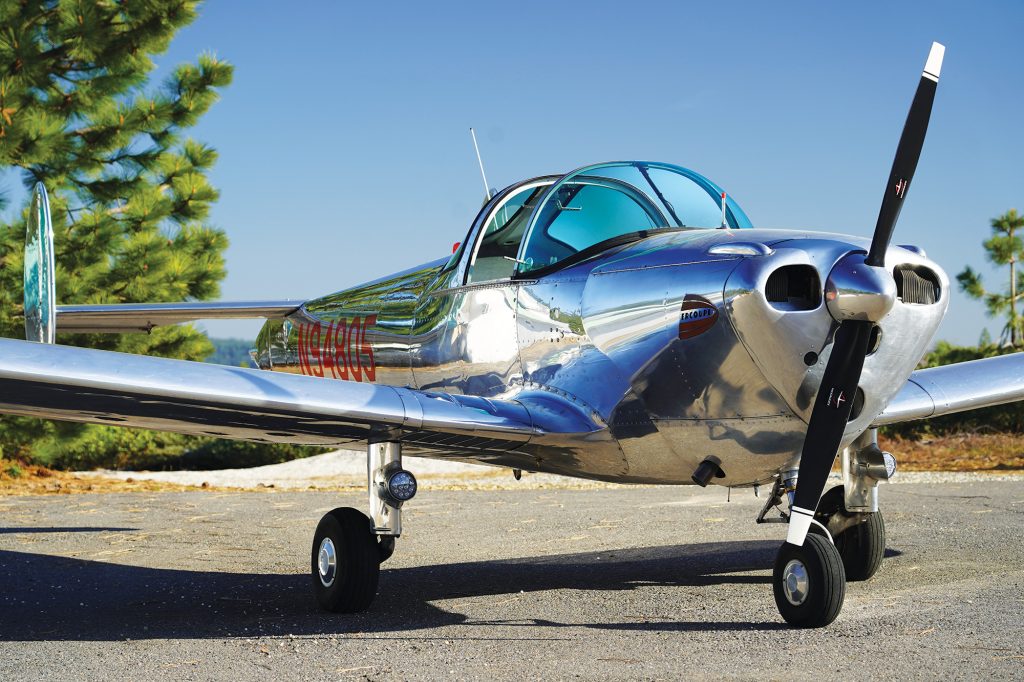
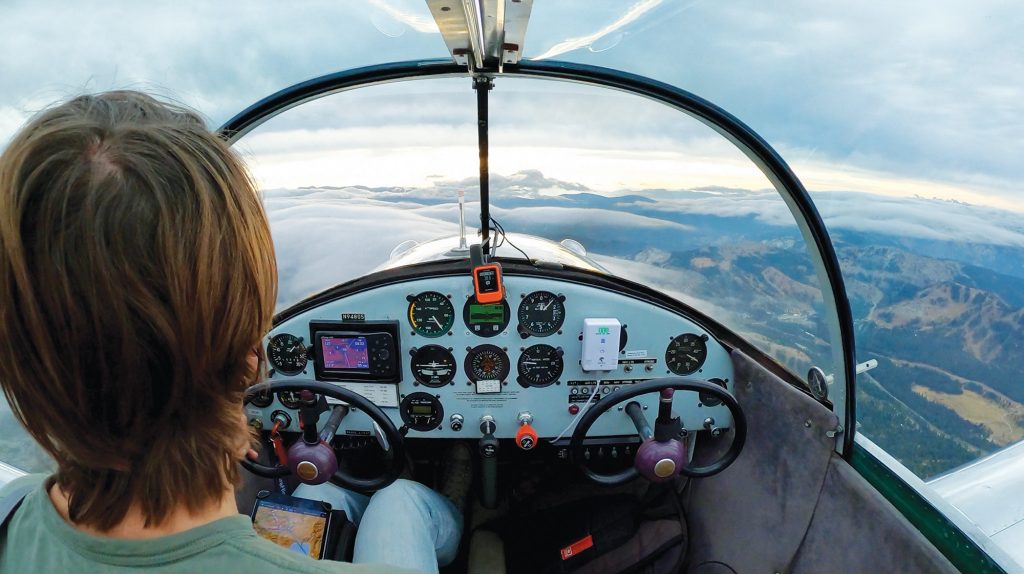
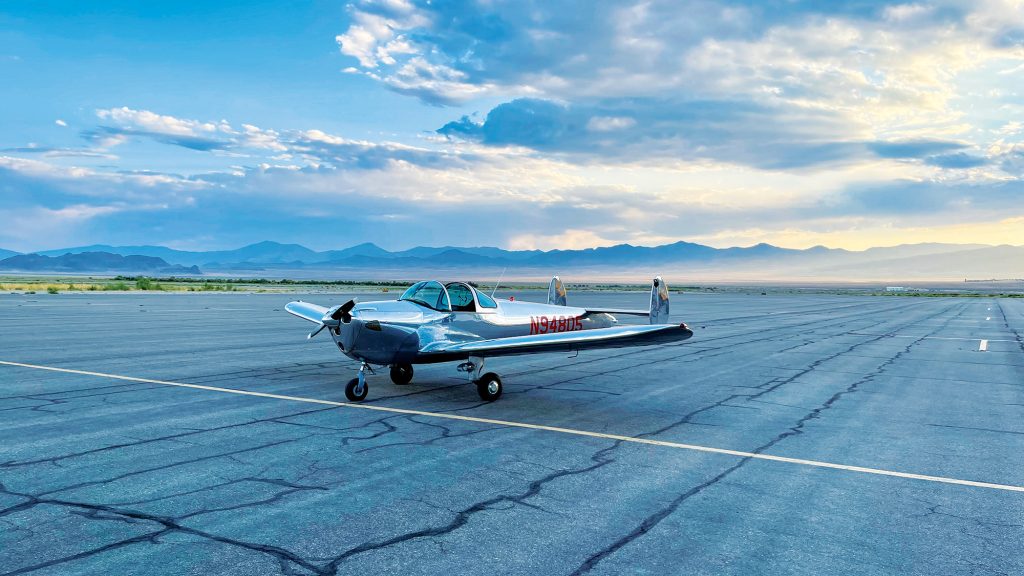
Of course, if you’re lucky enough to get your hands on one with a polished aluminium body, you can really complete the vintage pilot look. The one featured here belongs to James Good, you can check him out on YouTube (@jamesgood) or at ercoupetv.com. To me, there’s something so mesmerising about that polished aluminium styling. Watching a flash of silver cut against a blue sky, for some reason, really brings the awe of aviation back. Maybe it makes it easier to recognise that I’m watching a giant hunk of metal defying gravity up there. In any case, the Ercoupe really does bring a little bit of that childhood wonder back to flying, whether you’re in the cockpit or watching from the clubhouse.
Some models of the Ercoupe have actually always been RAAus registerable. With the introduction of Group G however, larger variants that were typecertified with a 1,400lb (635kg) MTOW can now find their way onto the RAAus register. For RAAus pilots looking for a taste of vintage aviation, you now have even more opportunity to fly one of these iconic aircraft.
Is the Ercoupe going to be the comfortable, longdistance travelling machine you’re planning to lap Australia in? No, probably not. But it’s a head-turner, a trophy aircraft and – most importantly – it’s fun. If you’re looking for a plane that will remind you why you fell in love with aviation in the first place, there’s not many better options out there.
